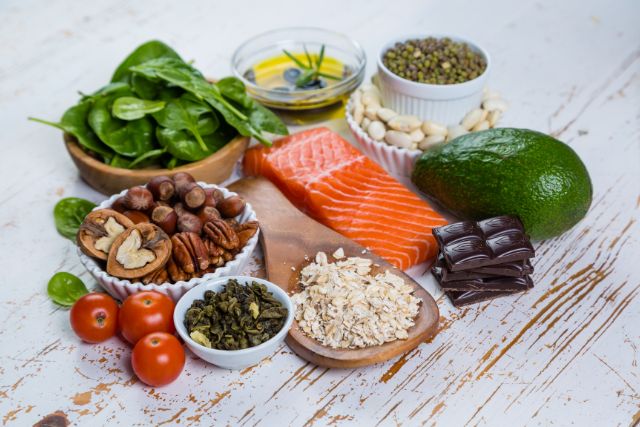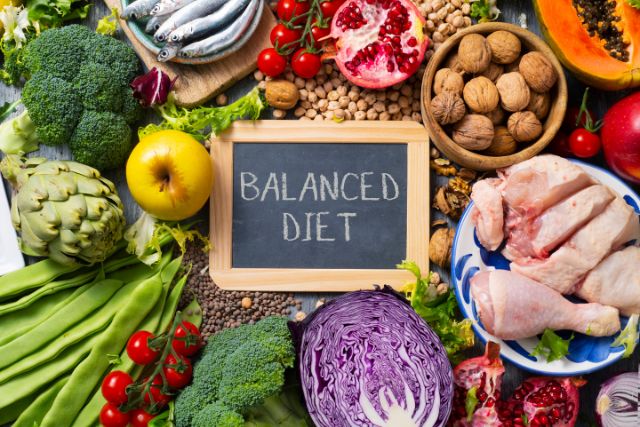Recent Posts
-

- Diabetes-Friendly Nutrition: Smart... 08.12.2024
-

- Nutrition for Chronic... 08.12.2024
-

- Anti-Inflammatory Diet: Food... 08.12.2024
-

- Low-Sodium and Heart-Healthy:... 08.12.2024
-

- Plant-Based Diets for... 08.12.2024
20 Overwhelmingly Filling Low-Calorie Foods

What’s your favorite food? Chicken? Beef? Or anything sweet, salty, or sour? Whatever your favorite food is or whatever you intake, these foods contain important calories in our bodies.
Energy is measured in calories. Calories are a unit of energy that encompasses both the food and drink individuals eat and the energy they expend when engaging in physical activity.
There is usually a list of calories on every food packaging to offer accurate information on the number of calories a person consumes. Cutting down on calories is a common weight reduction strategy.
There are apps for individuals who want to keep tabs on their caloric intake. Still, for those who aren't too concerned with the number of calories in each serving, this may have positive and negative consequences, depending on whether or not there is a calorie shortage or excess.
Losing too much weight while depriving one's body of essential nutrients may lead to health concerns. The body requires a certain quantity of calories for it to operate effectively. Cutting too many may lead to health problems, such as:
- Maintaining or growing bone density;
- Limiting the brain of required energy;
- Reducing metabolism;
- Raising the danger of gallstones; or
- Not obtaining adequate nutrition.
On the other hand, part of the calories you ingest is used as fuel by your body when you eat. The remaining calories are turned into fat and stored in the body. Consuming more calories than you expend may lead to weight gain or obesity, depending on how much you eat. Cancer and other long-term health concerns are more likely due to this behavior.
So whether you are conscious of the calories in your food or not, here are 20 overwhelmingly low-calorie foods that you can enjoy while not worrying about surpassing your body’s calorie intake.
Apple
The Satiety Index of Common Foods places this high-fiber fruit towards the top. The combination of apple slices' water and fiber with the almond butter's protein and healthy fat makes for a superior energy snack.
Arugula and Spinach
It's possible to load up on salads containing a lot of spinach or arugula and not gain too many extra pounds, thanks to these high-protein greens' high fiber and water content. Additional benefits include calcium and magnesium, vitamin K, vitamin C, folate, and other nutrients.
Beans
Beans, which are low in fat and calories and high in fiber and protein, provide a satisfying meal. Beans have a high fiber content, which slows digestion and helps regulate blood sugar. It is an excellent source of iron, potassium and magnesium, and folic acid.
Berries
There are various berry selections available to individuals seeking low-calorie and satisfying fruit. Berries have fewer natural sugars than many other fruits because of their high fiber and water content. Antioxidant- and anti-inflammatory-rich, filled with vitamins and minerals, are a great addition to any diet.
Broccoli
Broccoli is rich in fiber and low in calories, so your mother always urged you to eat it because of its high concentrations of antioxidants and other cancer-fighting nutrients.
Cucumber, Celery, and Carrots
For extra protein and healthy fat, hummus or guacamole may be added to these water- and fiber-rich vegetables. You'll also benefit from the addition of vitamins A, C, and K and potassium.
Eggs
Eggs, high in protein and low in calories, maybe the ideal breakfast option. Study after study has demonstrated that people who consume more protein in the morning are less hungry throughout the day and more satisfied. Eggs are a good source of choline, an essential mineral for brain and bone health, and vitamins B, D, E, and K. Furthermore, eggs are a good source of B vitamins and vitamins A, D, E, and K.
Fatty Fish
Salmon, halibut, tuna, and cod, all of which are high in fat but low in calories, are excellent protein sources. Omega-3 fatty acids, which are found in these fish, have been demonstrated to fight inflammation and promote cardiovascular health, brain health, eye health, and the overall health of the body. Those trying to lose or maintain weight should include fatty fish in their diet since it is rated second on the satiety index.
Grapes
Grapes are a rich source of vitamins C and K and potent antioxidants, and they are easy to carry and eat. Antioxidant anthocyanins present in the skin of a grape have been demonstrated to have cancer-fighting capabilities, much like berries.
Greek Yogurt
Greek yogurt is a fridge staple because of its probiotics and higher protein content. Flavored yogurt may include additional sugars, so keep an eye out for them. With honey and berries, you may add some sweetness to plain Greek yogurt, or you can mix up this Berry Green Smoothie, which incorporates some of the items on this list.
Oranges
In addition to vitamin C, oranges are an excellent source of potassium, and their high water and fiber content keep you feeling full. On the fullness index, oranges ranked fourth out of the 38 items tested; this is the highest rating fruit.
Popcorn
As a satisfying, low-calorie snack, popcorn is not the most nutrient-dense option on the list. Watch out for the amount of added fat and sugar in your popcorn, whether you pop it yourself or purchase it in a bag.
Potatoes
A five-ounce plain baked potato offers just around 100 calories, along with Vitamin C, potassium, some fiber, and some protein, although the simple spud has been ignored by many. In addition, boiling potatoes are the ideal low-calorie snack to satisfy you because of their high satisfaction index.
Quinoa
Quinoa is the only whole grain to contain a complete protein, making it a good choice for vegan diets. Cooked quinoa, in a half-cup serving, provides around 100 calories. This is an excellent option to try out as a high-protein basis for grain and salad bowls.
Steel Cut Oats
Steel-cut oats are packed with fiber, protein, minerals, and antioxidants, making them a nutritious and substantial breakfast option. Beta-glucan, a soluble fiber found in oats, has been demonstrated to delay digestion, reduce appetite, and promote feelings of fullness.
Whole Grains
A mainstay of many healthy eating programs, whole grains are an excellent choice. A good source of low-calorie fiber and protein, they help us feel full longer and slow down the digestive process. Whole grains, not processed grains, are the key to getting fiber and minerals while keeping the calories down.
Wild Rice
A half-cup portion of cooked wild rice has fewer than 100 calories. In recipes that call for white rice, consider substituting brown rice for a more full and nutrient-dense alternative.
Sources:
https://www.medicalnewstoday.com/articles/263028
https://www.medicalnewstoday.com/articles/calorie-deficit#risks
What happens when you overeat?.
https://www.cookinglight.com/eating-smart/20-low-calorie-filling-foods





